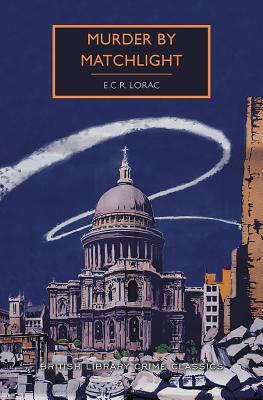 Murder by Matchlight by E.C.R. Lorac
Murder by Matchlight by E.C.R. Lorac Series: Robert MacDonald #25
Published by British Library Publishing Division on November 10, 2018 (first published 1945)
Source: NetGalley
Genres: Vintage Mystery
Pages: 226
Format: eBook
Purchase at Bookshop.org
Add on Goodreads

London, 1945. The capital is shrouded in the darkness of the blackout, and mystery abounds in the parks after dusk.
During a stroll through Regent’s Park, Bruce Mallaig witnesses two men acting suspiciously around a footbridge. In a matter of moments, one of them has been murdered; Mallaig’s view of the assailant is but a brief glimpse of a ghastly face in the glow of a struck match.
The murderer’s noiseless approach and escape seems to defy all logic, and even the victim’s identity is quickly thrown into uncertainty. Lorac’s shrewd yet personable C.I.D. man Macdonald must set to work once again to unravel this near-impossible mystery.
Murder by Matchlight features Scotland Yard’s imperturbable Chief Inspector Robert MacDonald, who is tasked with finding the killer of the man on the bridge. His only evidence: a set of bicycle tracks that come to an abrupt end. His suspects: a colorful cast that includes the shy, soft-spoken witness, a respected London physician, a screenwriter, an unemployed laborer, and a vaudevillian specializing in illusions.
This is the first of Lorac’s MacDonald mysteries I’ve read. MacDonald is a good character, smart, kind, a gentleman. He’s got several cops who work for him who have their own characteristics. But they are all honest and good at their jobs.
The job is not easy. The dead man lived in a boarding house along with several “theater” people. The suspects are definitely more interesting than the detective.
What makes Murder by Matchlight stand out is the war time London setting. The blackout restrictions and Nazi bombings are integral to the plot. It’s neat to see how normal life goes on during wartime. The theater stays open, the cops keep investigating, the restaurants continue serving, but you try to save your silk stocking when your building catches on fire because it’s nigh impossible to get new ones. Most mysteries I read from the era don’t show us quite as detailed a picture of how normal, everyday people were affected.
Hi Carol,
Several of my blogging friends are hooked on this series of vintage crime and I am so longing to make time to join them, but sadly so far, it is yet to be!
There is just something about the style of writing from the era which appeals to me, even though I am equally engaged by the more modern cut and thrust of the psychological thriller.
The narrative is so descriptive and as you say, it is so easy to immerse yourself in the social commentary of the times and often marvel at the ‘stiff upper lip’ of the British – a trait which sadly seems to elude us these days!
Thanks for sharing the book and your thoughtful review which I enjoyed reading 🙂
Yvonne
xx
I don’t actually tend to read thrillers. I’m not really into suspense; I prefer the puzzle side of mysteries I think.
I read this. Liked the setting very much as well as the era.
I liked the era and I found the bombing details interesting, but to be honest, I’m glad most vintage mysteries I read tend to leave those bits out.
You find the most interesting mysteries to read.
I just can’t resist any of them, which means I get a nice variety I guess.